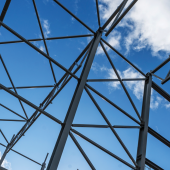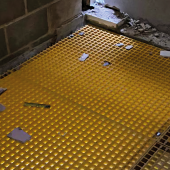Room for wellbeing

Elaine Knutt explores the science of building when the heating, lighting, ventilation and acoustic needs of the occupants are considered.
The link between wellbeing and good building design can easily be demonstrated by its converse – that poorly designed homes and workplaces are bad for us. Anyone who has struggled to concentrate in a stuffy meeting room, longed to escape from artificial light, shivered in the winter months or been unable to sleep in summer temperatures has experienced the discomfort – leading in some circumstances to ill health – linked
to poor building performance and design.
But despite our implicit understanding of the issues, the link between physical wellbeing and design parameters isn’t backed by anything more than good intentions. Design teams operate without legally backed guidance on indoor air quality, daylighting, overheating or in-use performance checks on buildings. The design metrics in the guidance document consulted at the beginning of a project are never converted into an operational target at the end – and all kinds of problems can flourish in between.
Ashley Bateson, partner at building services designer Hoare Lea, says that designing for health and wellbeing is more complex than it sounds. “People want good indoor air quality, good daylighting, good thermal comfort and acoustics. It sounds obvious, but because they are not adequately covered by regulations, it comes down to the skill of the designer to make sure it’s achieved. Daylighting and other internal issues simply aren’t covered. We tend to focus on energy efficiency, not health and wellbeing.”
With gaps in the regulatory framework and a scientific evidence base that is still emerging, design and development teams often turn to voluntary standards and certification schemes. The WELL Building Standard (WELL) specifically targets wellbeing, setting challenging performance criteria, evidenced by third-party independent checks, in ten categories including air quality, water quality, lighting, thermal comfort and acoustics. Developers in the UK have been enthusiastic adopters: 1,330 out of a worldwide total of 3,950 projects are registered here and working towards certification.
But while voluntary certification schemes might raise the aspirations of the top tier of commercial developers, they’re unlikely to bring up the lagging standards of the average construction projects: in fact, just eight completed and operational schemes have achieved full WELL certification. “All of these schemes [such as BREEAM, LEED, SKA and WELL] have helped to improve many aspects of construction and take forward the values of sustainability, but in real terms they’re only having an impact at the top end of the market, where people want this type of certification to increase the rental value and, latterly in the commercial sector, to attract and retain the best staff by providing good indoor environments for them to work in,” notes Andy Dengel, Director of Environment in the Building Technology Group at the Building Research Establishment (BRE).
Increasingly, there are growing calls for more radical change: a reform of the regulatory framework so that it targets wellbeing as much as carbon emissions and looks at operational performance rather than computer-modelled predictions. With the fundamental relationship between the construction sector and government being reshaped by the Hackitt reforms and the forthcoming Building Act, some experts are asking if wellbeing criteria – particularly on indoor air quality and thermal comfort – could be regulated alongside the new provisions on building safety.
Regulatory reform
The intersection between building design and health and wellbeing is filled with grey areas and contradictory research studies. On issues such as the concentrations of CO2 that will start to impact on cognitive performance, or how our eyes and brains react to artificial light, or the best way to prevent overheating homes in the urban heat island, there is plenty of debate but few clear answers. AT BRE, Dengel warns that knowledge is being advanced piecemeal; with little funding available for large scale research studies, researchers tend to undertake smaller, limited studies funded by manufacturers and sponsors.
“There’s a paucity of large, cross-disciplinary research with big sample sizes where you can identify trends, it tends to be small studies where interested parties have put up the funding so they only look at one system [such as ventilation]. We need a much bigger research programme otherwise the risk is that the problems we’ve talked about are being stored up for the future. For instance, should we be building with windows that open inwards so you can retro-fit shutters? If you don’t incentivise people to build differently, they’ll tend to do what they’ve always done.”
However, one factor that is focusing minds is the awareness that poor indoor air quality, daylighting and thermal comfort could be playing their part in depressing corporate quarterly figures. Mona Holtkoetter, at the International Well Building Institute (IWBI), which oversees the WELL Building Standard comments: “Companies are really interested in exploring metrics such as presenteeism or absenteeism. If you think about a typical company, it spends around 10% of its outgoings on operational activities, and 90% on its staff.” The IWBI can cite examples of success: engineering consultancy Cundall reported a 27% reduction in employee turnover in the year after it gained certification. In CBRE’s Madrid offices, a survey found that 80% of employees believed that their new offices had enabled them to be more productive.
Even if clients and construction teams are aware of shortcomings in wellbeing-related performance, attempts to raise standards are not supported by the regulatory system. Whether the issue is overheating, internal air quality or daylighting, there are no design targets in Building Regulations, and far fewer operational targets once the building is in use. For indoor air quality, there is a requirement to factor it in when making a planning submission, but Approved Document F simply says that supply air intakes should be sited away from sources of pollution and makes no provision on air quality in absolute terms.
“Building Regulations deal with the construction phase, not the operational life of the building. You get building control approval when you do a construction project or a refurbishment, and after that the building performance is what it is. But health and wellbeing is an ongoing issue,” says Bateson.
He highlights Sweden’s system of mandatory ventilation checks at completion and three or six-year intervals, for all buildings with ventilation systems, from schools and day care centres to offices, flats and detached homes. “In particular, owners have to show that refurbishments haven’t had a detrimental impact [on ventilation and air quality]. Sweden saw that refurbishments were impacting health, so buildings now have to be checked,” he says, adding that the Obligatory Ventilation Control (OVK) Regulations have been in place since 1991.
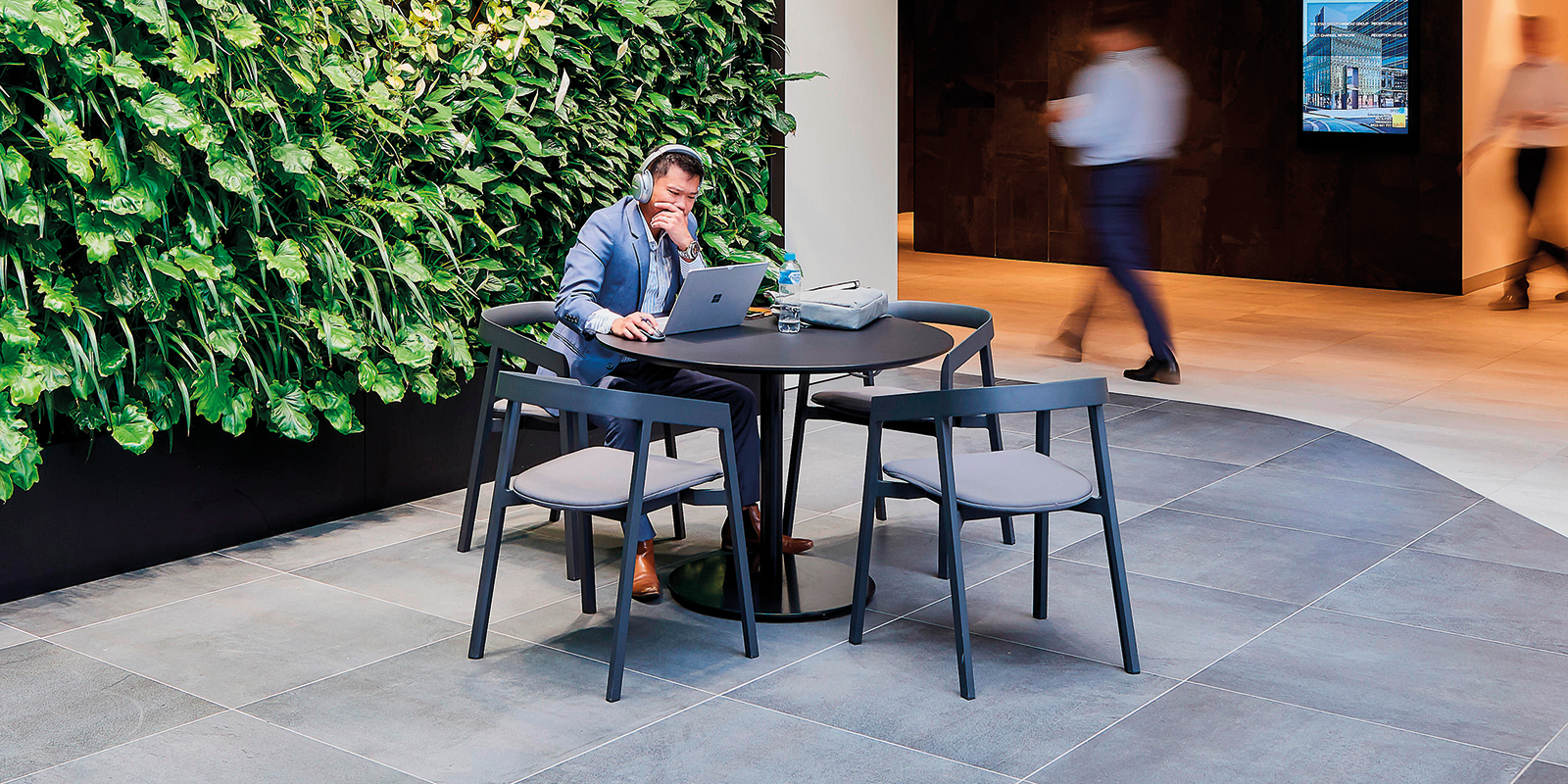
Air and ventilation
The general increase in public understanding of air pollution has focused attention on the internal air quality in our homes, workplaces, schools and hospitals. The influential 2016 report Every Breath We Take, from the Royal College of Physicians, highlighted the dangers of long-term exposure to poor internal air quality, and will soon be followed by the Royal College of Paediatrics and Child Health report (to which the BRE has contributed) on the effects of indoor air quality on children and young people’s health.
Currently, ambient air pollution regularly exceeds recommended WHO limits in most cities and urban centres: in 2015, just six out of 43 monitoring zones in the UK met the limit for annual mean nitrous oxide (NOX) levels. For any school, workplace or block of flats in a polluted area with natural ventilation, or a mechanical ventilation system that isn’t up to the job, it’s likely that harmful PM 2.5 particles (particulate matter 2.5 microns across) or NOX will be drawn into the internal environment and our lungs.
“Where [fine particulate] filters are in and systems are well maintained, they work. But if they are not there, in polluted areas you can end up with particulate matter and NOX indoors,” says Julie Godefroy, a building services engineer at Godefroy Sustainability and a CIBSE technical manager. She is also the lead author on a new update of CIBSE Technical Memorandum 40 (TM40) on health issues in buildings, which spans commercial buildings, the residential sector and public buildings. TM40 is being updated to reflect new knowledge on a range of subjects, including indoor air quality and pollutants, and lighting and circadian rhythms (an organism’s physical, mental and behavioral changes that follow a daily cycle based on its environment).
TM40 advice will help to fill many of the gaps left by the regulations: indoor air quality standards are neither targeted nor tested under current design and construction regulations. Approved Document F, on ventilation, sets out air changes per hour according to the volumetric space to be ventilated, as a metric that doesn’t account for variable occupancy levels or permissible levels of carbon dioxide. In any case, after a building is signed off by building control officers at practical completion stage, there will be no further enforcement of Part F.
One area of concern to employers is high CO2 levels, which can affect our ability to concentrate and make decisions. However, Godefroy points out that currently, the reliable research studies usually show that these effects are mostly found at concentrations well over the levels recommended by CIBSE and other good industry practice guidance (800-100ppm). “There is no doubt that some schools and offices don’t achieve these recommended levels, for example if the ventilation systems are not commissioned properly, or windows are kept closed because of noise or draughts, or filters haven’t been changed or occupancy levels have increased,” she acknowledges. “That’s an argument to focus on good commissioning, handover and maintenance, not reducing the recommended limit.”
Building services design firm Hoare Lea has carried out its own research, polling workers in 12 offices on their subjective assessments of air quality and “stuffiness”, then cross-referring to their objective measurements of CO2 concentrations. “We found there was a correlation between people’s perceptions of a problem and our measurements of internal air quality, and people are a good judge of where there is a problem,” Bateson explains, noting that staff recorded issues at concentrations as low as 700 ppm. The WELL Building standard sets its expectations at “below 800 ppm”.
Apart from CO2 and other air pollutants from outside, indoor air quality is also influenced by the level of Volatile Organic Compounds (chemicals emitted as gases from materials, paints and coatings) present that can trigger allergies, asthma and irritation. While Part F refers to total VOCs, or TVOC, Dengel points out that the actual risk to health relates to the more hazardous specific VOCs, such as benzene or formaldehyde.
Michael Swainson, a Principal Engineer in the HVAC and Building Diagnostic team at BRE, agrees that more could be done to minimise the risks posed by VOCs and to guide designers and their specification choices. “Some countries are further ahead of us and have labelling schemes for the materials in dwellings. Finland, Germany and France for example all have emissions rating schemes [for products], which make it easier for designers to assess options.” Swainson predicts that technology will bring improvements in the workplace, as ventilation systems become more “intelligent” and rely less on facilities managers and maintenance schedules. “We’re now moving to intelligent buildings that offer demand control ventilation, set by sensors that measure CO2 which can be used as a proxy for the number of people in a space. The system will vary to keep the level of CO2 constant, delivering the correct amount of fresh air,” he says.
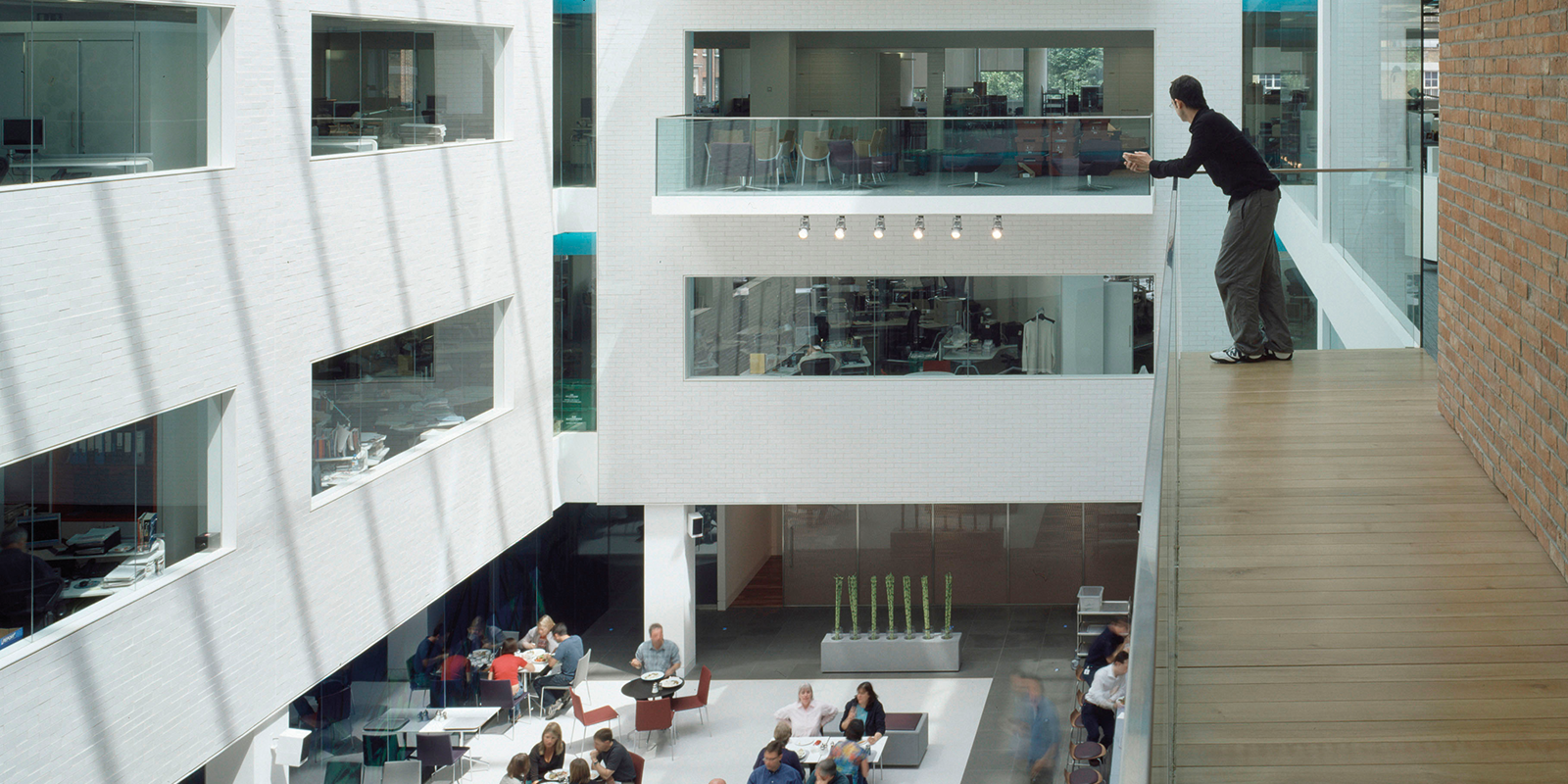
Biophilia
Planting and greenery is considered by many to simply be a means of reducing CO2 and increasing oxygen in an environment; but as WELL points out, plants do clean the air, but not as effectively as good ventilation, avoidance or reduction of source contamination (see peer reviewed studies Reducing Formaldehyde Exposure in Office Environments and Using Plants Critical Review: How Well Do House Plants Perform as Indoor Air Cleaners?). Plants bring other health benefits, they are a key component of wellbeing and mental health; thus the revised version of WELL offers credits for ‘connection to nature’. “That has two different aspects,” Holtkoetter explains, “Projects can look at access to nature in terms of indoor planting or outdoor areas, but it also incorporates the wider concept of ‘biophilia’, which means specifying natural materials, or even natural patterns that represent nature.”
There is plenty of research evidence to suggest that catering to ‘biophilia’, or our instinctive connection to nature, brings benefits to individuals and organisations in terms of engagement and mood. WELL references indoor plants in the Mind concept – where there are strong studies relating them to positive mental health effects such as reduced stress (Healthy workplaces: the effects of nature contact at work on employee stress and health). While an Exeter University study found that employees were 15% more productive when working in a plant-filled office than their peers in more spartan environs; the green office also boosted employee engagement, concentration levels and even perceived air quality. Scientists have suggested that looking at nature, even for a few seconds, can cause the brain to shift into a different mode of processing and views of nature and access to daylight have been shown to improve patient recovery in hospitals.
Lighting
A discussion of the impact “blue” spectrum light emitted by our phones and laptop screens on our circadian rhythms and sleep has led to more research on the link between lighting and health. At IWBI, Holtkoetter is excited by recent breakthroughs and their relevance for designers. “It’s been discovered that we have additional optical receptors as well as rods and cones (known as intrinsically photosensitive retinal ganglion cells or ipRGCs) – forming a photoreceptive system that helps to regulate our internal body clock. It changes our view of the spectrum of light, and how it changes over the course of the day with more blue in the mornings. We have incorporated that aspect into our criteria for lighting systems.”
The research is directly relevant to designers and specifiers, as the low energy LED bulbs that are now standard in commercial buildings often emit more blue light than other sources. ”In the past few years, there has been a huge product transformation, and fundamental advances in knowledge of how light affects us”, says Godefroy. “It’s still really a research area, but there is consensus among researchers that light, its intensity but also its spectral distribution, affects circadian rhythms. WELL has possibly introduced criteria (melanopic lux) a bit early, but it recognised at the time that this was an evolving field and it has led to active debate among professionals, with other possible metrics developed since.” To that end, a report from BRE on light and circadian rhythms is also due. While it is clear the LED blue light needs to be addressed and that natural light needs to be maximised in the living and working environment (through sun pipes for example), until the active debate produces a direction, the building engineers and planners are no further forward.
Light and heat
Access to daylight is clearly a factor in our subjective perceptions of wellbeing, but again is not covered by Building Regulations. Elsewhere in Europe, daylight is considered a right protected in employment law. “In Germany, there is a requirement for daylight in offices, as part of the Workers Protection Act,” says Holtkoetter. But in the UK, in deep plan offices, it’s possible that individuals may be seated up to 15m away from daylight. Perhaps the worst example of a regulatory failure to protect health and wellbeing lies in the residential sector. There is now a general recognition that a generation of homes have been built with a combination of solar gain and inadequate ventilation, leaving residents suffering discomfort and distress. In 2016, a report from the government’s Committee on Climate Change concluded that 20% of homes in the south of England were at risk, and that homes with high risk of overheating were still being built.
In the worst affected cases, overheating is present all year round. “It’s to do with the way we build – often we see back-to-back flats with no facility for cross ventilation, or you can’t open the ground floor windows because of security or noise concerns, or in high rises the windows will only open by 10cm because of safety guidelines. All of these factors contribute to excess heat if there isn’t enough ventilation,” says Dengel at BRE. “We’ve seen blocks of flats that are hot 365 days a year. If we’re seeing flats now that are too hot in December and January, what will dwellings of this type be like in 2050 when our mean and maximum outdoor temperatures are set to have risen?”
Design problems include poor ventilation that is inadequate to remove heat from the property, while opening the windows might be a security risk or invite in air or noise pollution. BRE studies have found trickle vents that are too small to be effective or even ignored by residents, or MVHR (Mechanically Ventilation with Heat Recovery) units that require ongoing maintenance and calibration. As well as overheating, properties with poor ventilation are at risk of high humidity levels and mould growth, and unhealthy concentrations of carbon dioxide and VOCs.
Other factors include customer preferences for a clean-lined, minimalist aesthetic fuelled by ‘TV architects’ promoting floor to ceiling glazing and patio-style doors with a tilt and turn mechanism. “But you can only open them by 10cm which isn’t enough to reject heat in summer or leave them wide open which poses a security problem,” says Swainson. “We need to go back to having windows with different opening lights and transoms – we’ve lost the art of designing windows as a fundamental part of the ventilation strategy – they’re not just for the view.”
Following the CCC report, the Department of Communities and Local Government commissioned reports into overheating risk in new homes, strategies to mitigate it, and indoor air quality by consultancy AECOM. Published in 2019, they revealed that the worst affected properties exceeded the CIBSE definition of overheating by 60%, and only two out of 55 homes in the ventilation study met the guidance in Part F. “You could say the level of problems was anticipated, but also that our worst fears were confirmed,” says Swainson. “There is a lack of understanding around the need for ventilation, so it is viewed as a Cinderella – an add-on rather than a necessity.”
In the current approved documents to the Building Regulations, Part L, Appendix P addresses the risk of overheating, but doesn’t relate it to thermal comfort or health. Overheating is mentioned in one line of Part F, although industry guidance goes much further. “CIBSE suggests that, to provide cooling and removal of heat, ventilation has to be higher than the background rate by a factor of up to 10 if you want to achieve thermal comfort in hot conditions – but Part F doesn’t cover that,” notes Swainson.
As a result of the CCC report, a parliamentary inquiry and the government’s subsequent research programme, the DCLG has launched a consultation on adding a requirement to control and test for overheating risk to the Building Regulations. Though, when they come into effect, if you have already applied for building control approval you are not required to follow the new building regulations.
Where the challenge is to heat the space, designers and specifiers now have the option of specifying infrared heating, which can be an energy efficient choice in homes and offices. Available as panels, ceiling tiles or even disguised to look like mirrors or wall art, infrared heaters emit long wave radiant energy that warms up the objects, furniture or people in its path rather than the surrounding air. There are reported health benefits too such as increased blood circulation, a reduction in joint pain and an enhanced immune system.
Water and sound
Design teams also have options for measuring ambient noise and controlling the acoustics. In office environments for example, where too much noise can seriously reduce productivity and increase stress, there are a variety of new options to absorb or diffuse sound: internal partitions can be built from special acoustic foam and wool to reduce unwanted sound; ceiling-suspended multi-service panels provide a new route to improve acoustics and standalone quiet pods are increasingly popular. A common problem in office and residential schemes is the noise from mechanical ventilation systems – here again, Part F does not stipulate allowable noise levels, relying on subjective terms such as “not unduly noisy”, yet where wellbeing is concerned that’s a subjective assessment.
Monitoring systems remove the subjective nature of assessing the quality of the environment. For example, drinking water quality in the UK achieves around 99.9% compliance with the EU Drinking Water Directive, according to a July 2018 report for the House of Commons library. Yet things can still go wrong with the system such as ‘blue water’ in newly commissioned buildings caused by contamination from copper piping. It tends to occur if a newly-built system has been pressurised for testing, but the building is not immediately occupied and water is left in the copper pipes. Most recorded cases relate to large public buildings or new housing estates, although a secondary school in Coatbridge, Lanarkshire, made headlines last year over health fears linked by a blue water incident.
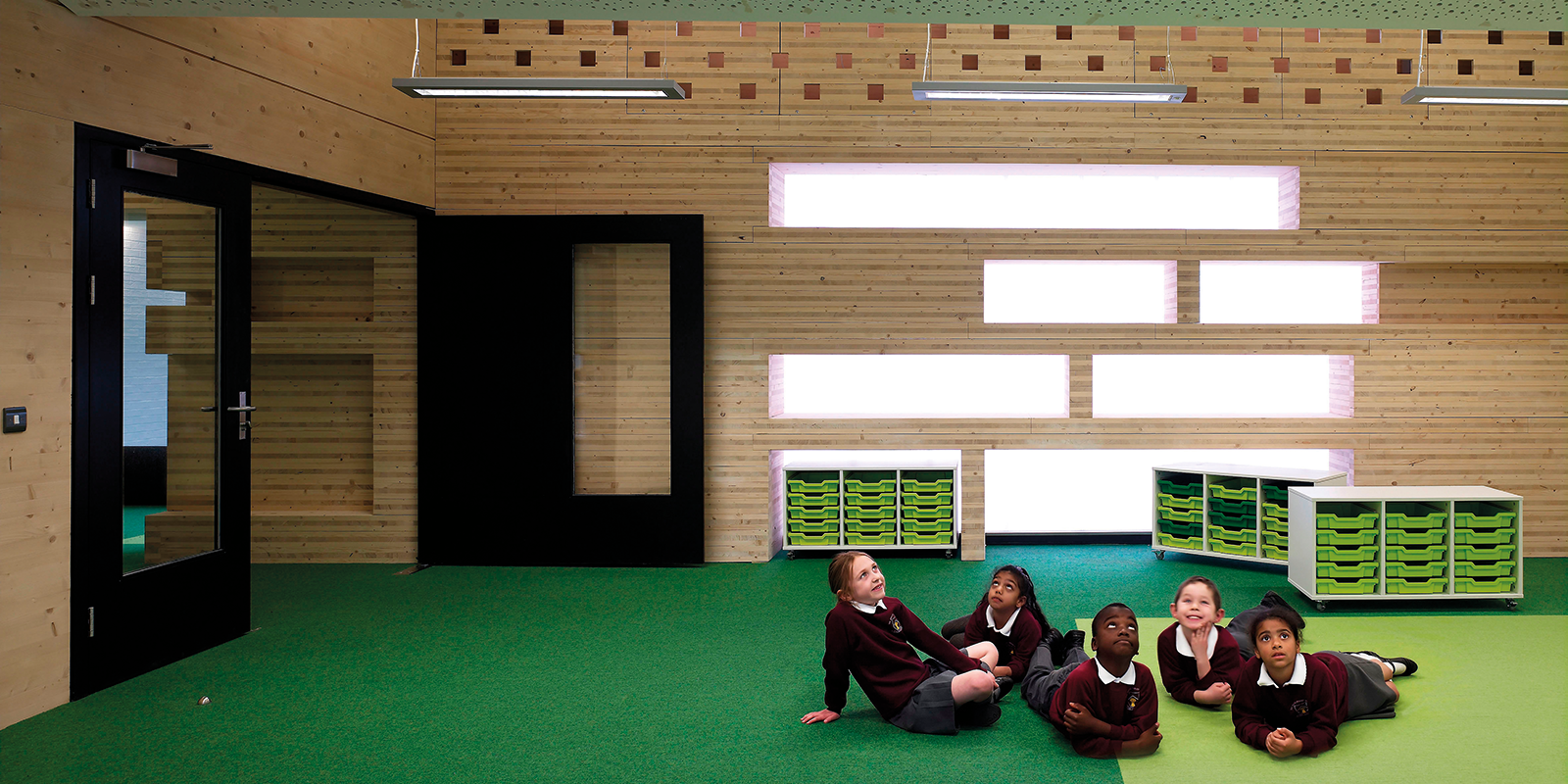
What will drive change?
In the future, sensors and ‘smart’ data-enabled buildings are likely to give owners or occupiers an accurate real-time read-out of wellbeing parameters – such as CO2 levels, internal air quality, temperature and thermal comfort – that should help to raise standards. “We’ve now put air quality sensors in all our offices and people are very interested in the results”, says Bateson at Hoare Lea.
In the areas where BRE operates, Dengel sees a similar trend towards self monitoring, although he warns that the accuracy of the data will be critical. “People are now more aware that air quality might be affecting their health, and you can buy CO2, particle or VOC monitors for as little as £50. At BRE, we’re trying to work towards producing a standard for these: if people are using data from such devices to make decisions and disseminating details to stakeholders, there is a need to make sure the data is reliable. A basic monitor, based on cheap sensors, might be able to show a trend, but in terms of actual numbers, it’s often of limited value.”
With many of the problems linked to lax specification, construction and commissioning, Godefroy hopes that the reforms implementing the Hackitt Review will ultimately have a positive effect on building standards and wellbeing. “For the whole industry, the Hackitt Review is expected to drive a culture change. In theory, the whole issue of attention to detail should benefit every aspect of safety and performance.”
Currently, there is an ongoing consultation to revise Parts F and L, which should introduce more towards functional checks into the system. But there are also industry-backed moves to rethink the regulatory system, including a campaign from the Building Performance Network, a not for profit pressure group set up in 2017. It published a joint position statement backed by CIBSE, the RIBA, the Good Homes Alliance and others, calling for a shift in emphasis in the building regulation from design targets to in-use performance.
“There is quite a lot of industry awareness of the need to move to in-use performance checks as opposed to design standards, as illustrated by the newly launched Building Performance Network joint statement: bit.ly/38g8YAE. Ultimately, when we look at buildings that have performed well, this was usually driven by an operational target, not just design or as-built targets,” says Goedfroy, who was involved in the joint statement. “While these checks could form part of a wider role for building control officers, Godefroy adds that, for example, a potential route to explore would be for them to be incorporated into the mandatory safety certification process needed by certain building types under the Hackitt regime’s proposed Building Safety Regulator.”
The campaign is initially focused on energy consumption and carbon emissions, with a view to expanding it to cover other aspects of building performance, including indoor air quality and thermal comfort. It’s a long way from implementation, but the initiative is a marker of the increasing recognition that health and wellbeing is poorly served by the current system, and that future generations deserve better.
Further reading: Reducing Formaldehyde Exposure in Office Environments Using Plants bit.ly/30sBTyZ
Critical Review: How Well Do House Plants Perform as Indoor Air Cleaners?bit.ly/2zOjdjT


